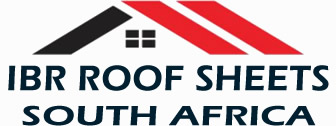IBR Roofing: A Game-Changer in the World of Roofing
What if I told you that there is a roofing system that combines durability, versatility, and aesthetic appeal all in one? Meet IBR roofing, the latest trend in the construction industry that is revolutionizing the way we think about roofs. Whether you are a homeowner looking to enhance the curb appeal of your house or a builder in search of a reliable roofing solution, IBR roofing is the answer you’ve been waiting for. In this article, we will delve into the world of IBR roofing, exploring its origins, benefits, and applications. From its unique design to its remarkable performance, we will uncover why IBR roofing is becoming the go-to choice for many construction projects worldwide.
IBR roofing, short for Inverted Box Rib roofing, is a type of metal roofing that has gained significant popularity in recent years. It is characterized by its distinctive profile, which features a series of high ribs and low valleys, creating a robust and visually appealing structure. Originally developed in South Africa, IBR roofing was primarily used for industrial and commercial buildings due to its exceptional strength and weather resistance. However, its versatility and aesthetic appeal have made it increasingly popular in residential construction as well.
In this article, we will explore the key features that set IBR roofing apart from other roofing systems. We will discuss its exceptional durability, which allows it to withstand harsh weather conditions, including heavy rain, strong winds, and extreme temperatures. Additionally, we will examine its versatility, as IBR roofing can be used for a wide range of architectural styles, from modern to traditional. We will also delve into the installation process, highlighting the ease and efficiency with which IBR roofing can be installed. Moreover, we will discuss the various materials available for IBR roofing, including steel, aluminum, and copper, and their respective benefits. Lastly, we will touch upon the environmental advantages of IBR roofing, such as its recyclability and energy efficiency.
So, whether you are considering a roof replacement or embarking on a new construction project, join us as we uncover the world of IBR roofing and discover why it is becoming the roofing system of choice for many homeowners and builders alike.
Key Takeaways:
1. IBR roofing is a popular and versatile roofing material that is commonly used in industrial, commercial, and residential buildings.
2. The term “IBR” stands for “Inverted Box Rib,” referring to the distinctive shape of the roofing sheets, which feature high ribs and wide valleys.
3. IBR roofing offers several advantages, including excellent durability, weather resistance, and ease of installation.
4. The versatility of IBR roofing makes it suitable for various architectural styles and applications, from warehouses and factories to homes and offices.
5. Proper maintenance and regular inspections are essential to ensure the longevity and performance of IBR roofing, including cleaning, repairing any damages, and applying protective coatings.
The Use of Asbestos in IBR Roofing
IBR roofing, also known as Inverted Box Rib, is a popular roofing material due to its durability and affordability. However, one controversial aspect of IBR roofing is its historical use of asbestos. Asbestos is a naturally occurring mineral that was commonly used in construction materials for its fire-resistant properties.
Proponents of IBR roofing argue that asbestos was widely used in the past and that many buildings still have asbestos-containing materials. They argue that as long as the asbestos is not disturbed, it does not pose a health risk. Additionally, they claim that IBR roofing with asbestos is still a viable option for certain applications, especially in areas where fire resistance is a priority.
On the other hand, opponents of IBR roofing with asbestos emphasize the well-documented health risks associated with asbestos exposure. Inhalation of asbestos fibers can lead to serious respiratory diseases, including lung cancer and mesothelioma. They argue that the use of asbestos in any form should be strictly prohibited to protect the health and safety of workers and occupants of buildings.
The Environmental Impact of IBR Roofing
Another controversial aspect of IBR roofing is its environmental impact. IBR roofing is typically made from galvanized steel, which requires significant energy and resources to produce. The manufacturing process of galvanized steel involves the extraction of iron ore, which can have detrimental effects on the environment, including deforestation and habitat destruction.
Proponents of IBR roofing argue that its long lifespan and recyclability offset its initial environmental impact. They claim that the energy saved from not having to replace the roof frequently outweighs the energy used in its production. Additionally, they argue that recycling IBR roofing at the end of its life cycle further reduces its environmental impact.
Opponents of IBR roofing’s environmental impact argue that the recycling rate for galvanized steel is relatively low, and a significant amount of waste ends up in landfills. They also point out that the energy used in the production of galvanized steel contributes to greenhouse gas emissions and climate change. They advocate for alternative roofing materials with lower environmental footprints, such as recycled or sustainable materials.

